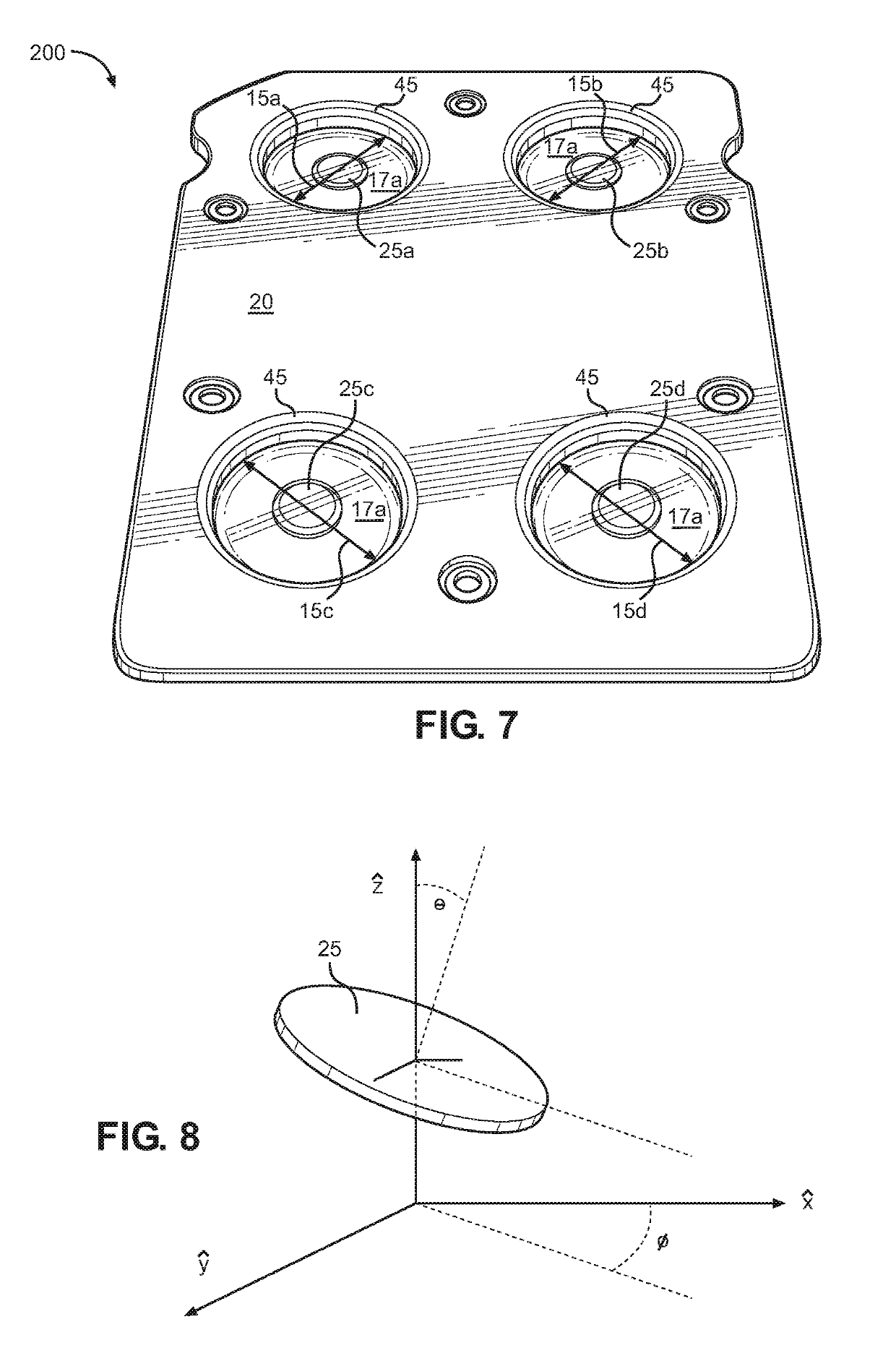Suspension of a sample element with dimensional stability
a sample element and dimensional stability technology, applied in the field of suspension or holding sample elements, can solve the problems of small sample movement, significant experimental correlation, and inability to analyze or read a suspended sample element, so as to improve reliability, improve accuracy and/or repeatability
- Summary
- Abstract
- Description
- Claims
- Application Information
AI Technical Summary
Benefits of technology
Problems solved by technology
Method used
Image
Examples
examples
[0047]The following examples are set forth as representative of the present invention. These examples are not to be construed as limiting the scope of the invention as these and other equivalent embodiments will be apparent in view of the present disclosure and appended claims.
[0048]Mechanical or manual creasing of the film, for example against a lower corner edge of a top section of a substrate, is effective although not always reproducible in a large-scale manufacturing environment. More robust ways to achieve the same or a similar creasing effect were therefore sought. To this end, the sample platform substrate was altered to effectively impart a mechanical creasing that was previously done by hand. In particular, an angled extension element was added to the bottom plate of this substrate, which resulted in an even higher success rate, approaching 100%, at reducing opportunities for twisting and downward movement of the sample element. In fact, reproducibility was shown to improv...
PUM
| Property | Measurement | Unit |
|---|---|---|
| diameter | aaaaa | aaaaa |
| temperature | aaaaa | aaaaa |
| wavelengths | aaaaa | aaaaa |
Abstract
Description
Claims
Application Information
 Login to View More
Login to View More - R&D
- Intellectual Property
- Life Sciences
- Materials
- Tech Scout
- Unparalleled Data Quality
- Higher Quality Content
- 60% Fewer Hallucinations
Browse by: Latest US Patents, China's latest patents, Technical Efficacy Thesaurus, Application Domain, Technology Topic, Popular Technical Reports.
© 2025 PatSnap. All rights reserved.Legal|Privacy policy|Modern Slavery Act Transparency Statement|Sitemap|About US| Contact US: help@patsnap.com



